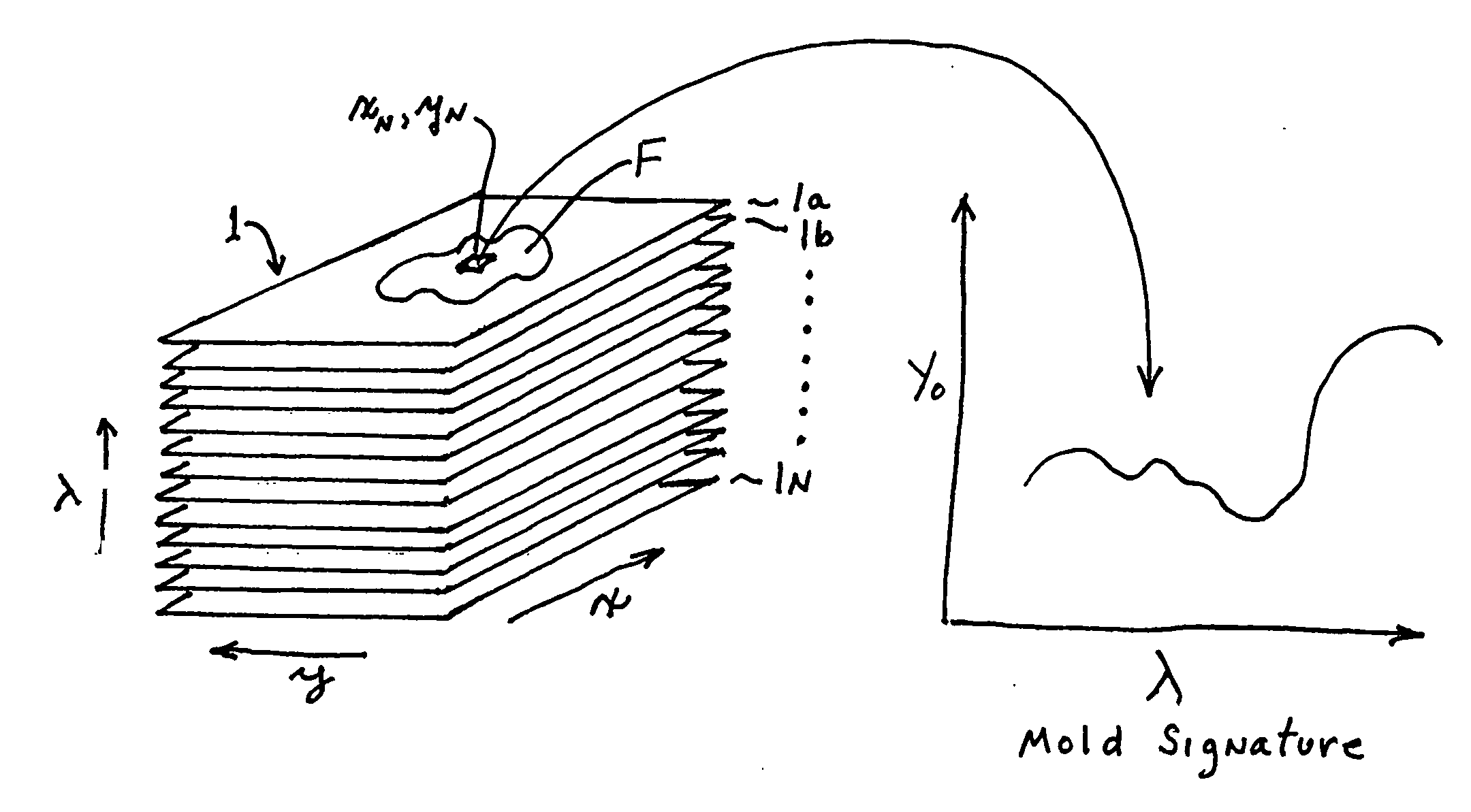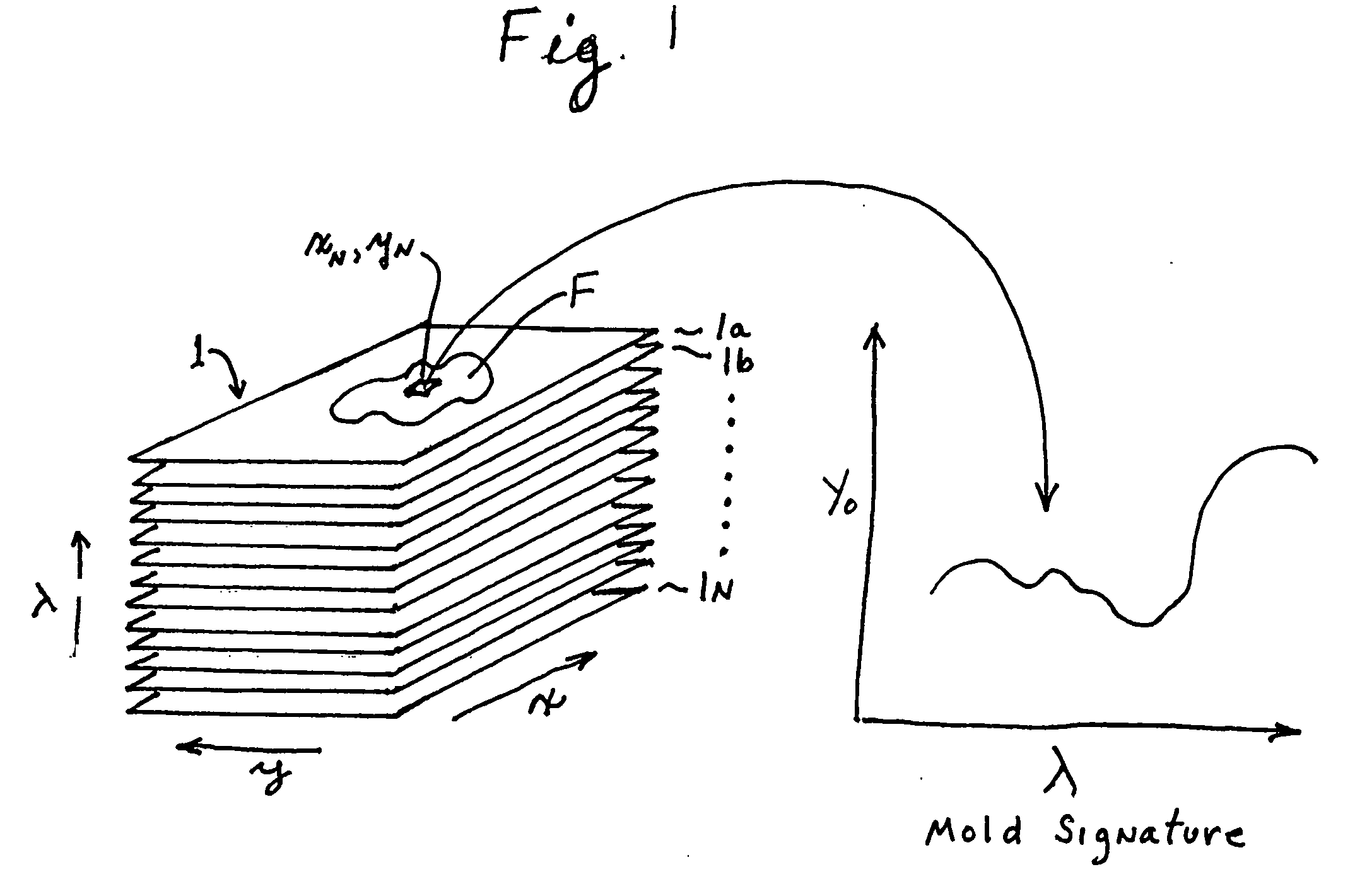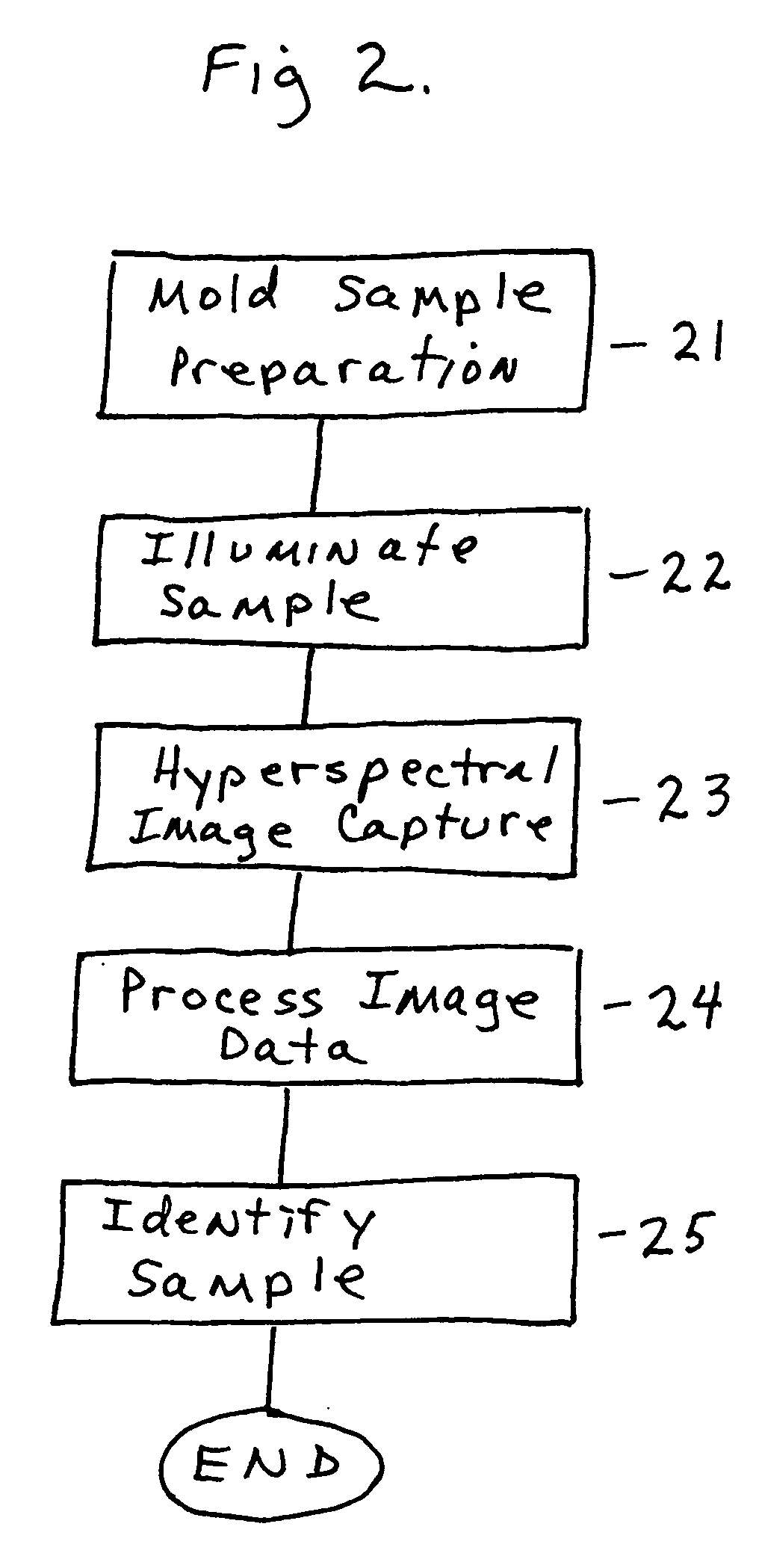Method and apparatus for non-invasive rapid fungal specie (mold) identification having hyperspectral imagery
a technology of hyperspectral imagery and fungal specie, which is applied in the field of optical system for identifying fungal species, can solve the problems of delayed reading of results, limited kit detection of yeasts and yeast like organisms, and high cost and labor intensity of traditional microscopic observation methods, so as to facilitate interaction, generate identification results in a short period of time once the image is acquired, and high spectral and spatial resolution
- Summary
- Abstract
- Description
- Claims
- Application Information
AI Technical Summary
Benefits of technology
Problems solved by technology
Method used
Image
Examples
Embodiment Construction
[0035]The scanning and detection techniques utilized by the present invention are based on those disclosed in U.S. Pat. No. 6,166,373 (Mao), the disclosure of which is hereby incorporated by reference.
[0036]FIG. 1 herein illustrates a data set, sometimes referred to as a hyperspectral imaging cube 1, which results from the scanning of a sample using a hyperspectral scanning device. In such a data set, each x-y pane 1a-1n represents a spatial distribution of intensity values for an x-y matrix of individual pixels at a particular wavelength λ. That is, each of the “planes”1a-1n can be thought of as an image of sensed radiation at a different wavelength. Collectively, the stack of such images forms a “cube”, in which spatial information is defined by the x and y axes, and spectral information is indicated along the λ axes, for each pixel in the x-y plane.
[0037]Thus, it can be seen that if a particular pixel is selected at a point (xn, yn) in the x-y plane that is located within a fungu...
PUM
 Login to View More
Login to View More Abstract
Description
Claims
Application Information
 Login to View More
Login to View More - R&D
- Intellectual Property
- Life Sciences
- Materials
- Tech Scout
- Unparalleled Data Quality
- Higher Quality Content
- 60% Fewer Hallucinations
Browse by: Latest US Patents, China's latest patents, Technical Efficacy Thesaurus, Application Domain, Technology Topic, Popular Technical Reports.
© 2025 PatSnap. All rights reserved.Legal|Privacy policy|Modern Slavery Act Transparency Statement|Sitemap|About US| Contact US: help@patsnap.com



